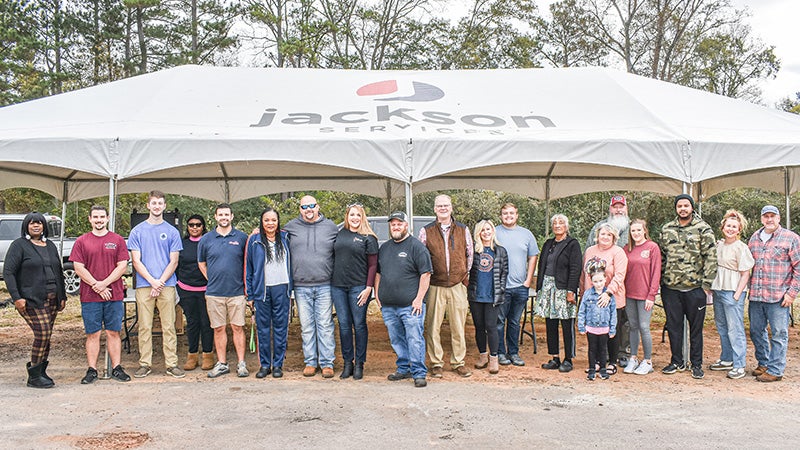Lanett High School to use VR as a learning tool
Published 8:00 am Saturday, January 6, 2024
|
Getting your Trinity Audio player ready...
|
Lanett High School is taking its Career Tech program into the future with virtual reality lessons. The JROTC and Career and Technical Education (CTE) classes completed a two-day virtual training where students got hands-on military and medical training.
The school coordinated with the U.S. National Guard to bring virtual reality machines that immerse users in different occupations, primarily military occupational specialties (MOS), which are roles or jobs done by those in the military. The National Guard brought and set up the systems in the school’s auditorium. The training and use of the machines are free, if the National Guard recruiter is present to talk to the students about the branch.
“It’s all about trying to provide as many opportunities as we can for our students and our cadets. You have to be open-minded about the different ways that you can reach students today. You always have to continue to challenge yourself, if you want to challenge them,” JROTC teacher Christopher McKinney said.
On the first day of training the CTE students used the Vizitech USA MedTable AR (Augmented Reality). The system is a mat depicting the body’s musculoskeletal system. Students got three tablets per table to view the interactive AR digital body overlay. When the tablet hovers over the image, the screen will explore the anatomy of the body part it is hovering over, specific organs, body parts, and how the systems of the body work together.
The tablet allows students to see three-dimensional, scalable models of the structure and function of the body through the screen. Some of the models are more interactive. Some of the major organs are dissectable in the system or show movement, like the blood flowing through the heart. There are built-in quizzes while the students study the body. The nursing and some science classes joined in on the training.
Friday’s training consisted of four different VR and AR experiences focused on a specific MOS. There was a machine with steering wheels and peddles that was used to drive a virtual HumVee, a transport and tactical vehicle used in the military. Another taught them how a bulldozer is driven.
Two other systems immersed the students in air traffic control and building a communication and internet platform. Students built a flight plan involving airplanes and helicopters on an airfield. The other introduces the skills of information technology, figuring out how to put communications systems in place.
The CTE students rotated through the four stations, getting scores and rankings on their abilities. McKinney said the nature of the systems gives the feeling of video games while introducing the students to the skills necessary for their potential careers, regardless if his students go into the military.
“Some of the same jobs translate out into society drive being a truck driver, bulldozer, you know, heavy construction equipment…planning an airfield is a lot like planning our highway. Then, of course, the computer network and IT Stuff that goes without saying,” McKinney said.
McKinney tries to do something unique or interactive, like the training, every nine to 12 weeks. He hopes to have the National Guard bring other VR machines for his students to experience different careers.
“I think [technology] is very important in reaching them educationally. They want to be challenged, but they respect technology. So if you can figure out how to use technology to challenge them, they will give you a better effort,” McKinney said.
He pulled up a picture on his phone from the previous day’s MedTable training, to highlight the importance of tech for young people. It showed six students huddled around the MedTable, all intently looking down at the tablets.
“There’s very little I can do in a classroom environment that makes them that attentive. Whatever is going on on that tablet is getting all of their concentration and focus right now … these kids are very technologically advanced. So meet them where they are and figure out how to create some sort of educational experience for them by using what they enjoy,” McKinney explained.





